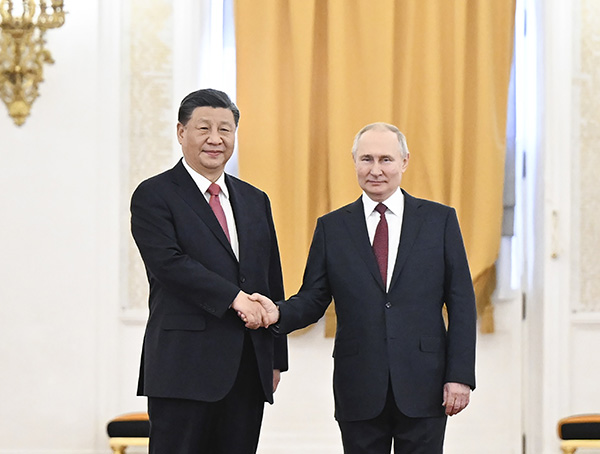Initiative (BRI), once seen as Beijing’s ticket to global dominance, is now faltering under mounting debt, unfinished projects, and growing international skepticism. As countries like Brazil, India, and Sri Lanka withdraw or renegotiate their involvement, the BRI’s failures expose its role in economic entrapment and geopolitical leverage rather than genuine development.
With Trump back in the White House, China’s economy is likely to face even greater strain, further limiting its ability to invest in the BRI and expand its global influence.
A decade after its launch, China’s Belt and Road Initiative (BRI) is faltering. Once hailed as a transformative infrastructure project that would reshape global trade, the BRI has instead been marred by financial instability, unfinished projects, and accusations of debt-trap diplomacy. Countries that once embraced Beijing’s ambitious promises are now stepping back, with Brazil being the latest major economy to reject formal participation, joining India and Italy in distancing themselves from the initiative. As nations struggle with mounting debt and projects that fail to deliver meaningful economic benefits, the BRI’s grand vision is unraveling.
Despite Beijing’s assurances of prosperity, many BRI projects have turned into financial and logistical nightmares. The China-Pakistan Economic Corridor (CPEC) exemplifies these failures—Gwadar Port remains largely non-functional due to corruption, insurgency, and mismanagement.
Key infrastructure, like the Karachi-Lahore Motorway and the ML-1 railway modernization project, has either stalled or become financially unsustainable. Similarly, in Indonesia, the high-speed rail project connecting Jakarta and Bandung has faced repeated delays and ballooning costs.
In Africa, Kenya’s Nairobi-Mombasa Standard Gauge Railway initially celebrated as a game-changer, has proven financially unsustainable, burdening the government with excessive debt. In Sri Lanka, the infamous Hambantota Port, financed with Chinese loans, was handed over to Beijing on a 99-year lease after Colombo defaulted on its debt.
Even in Europe, concerns over quality and accountability have surfaced. The collapse of a railway station canopy in Serbia, killing 15 people, ignited mass protests against government corruption and opaque contracts with Chinese firms, reinforcing global skepticism about the reliability of BRI projects.
For many nations, the BRI has delivered dependency rather than development. Laos, for example, pursued the $6 billion Boten-Vientiane railway project, only to find itself in a debt crisis that forced it to cede 90% control over its national electricity grid to a Chinese state-owned company in 2020.
The Indian Ocean Region (IOR) has become a hotbed of Chinese influence, where Beijing has strategically placed itself in control of key maritime assets. Sri Lanka’s Hambantota and Pakistan’s Gwadar blur the line between commercial infrastructure and military expansion. In Bangladesh, mounting debt from China-financed infrastructure projects has placed economic sovereignty at risk.
Malaysia provides a rare example of a country successfully renegotiating BRI agreements. The East Coast Rail Link (ECRL), originally valued at $16.5 billion, was renegotiated to $11 billion after a change in government exposed inflated costs and corruption. This demonstrates that while BRI projects pose risks, proactive governance can mitigate them.
Beyond economic concerns, the BRI serves as a vehicle for China’s strategic dominance. Ports like Gwadar and Hambantota, framed as commercial projects, hold military potential, enabling China to expand its naval reach in the Indo-Pacific. This has raised alarms among regional powers, particularly India and the United States.
Additionally, China’s economic strategy fosters long-term dependence by dumping cheap goods into BRI partner markets. This undercuts local industries, stifles domestic innovation, and forces governments to prioritize debt repayment over national development. The economic entrapment further consolidates Beijing’s influence over domestic policies.
The failures of the BRI are now impossible to ignore.
Once seen as an opportunity for economic growth, the initiative is increasingly viewed as a tool for Beijing’s political and strategic ambitions. As Brazil, India, and Italy reconsider their involvement, the narrative around the BRI is shifting from one of opportunity to one of caution.
While China still seeks to expand its reach, resistance is growing. Countries like Pakistan, Sri Lanka, and Laos serve as cautionary tales, illustrating the dangers of unchecked Chinese investment. Moving forward, nations must carefully evaluate infrastructure deals to avoid falling into economic and geopolitical dependency.
The global skepticism toward the BRI is a clear message: development must not come at the cost of sovereignty and economic stability. As more countries step back, China’s ambitious vision for global influence through infrastructure is steadily unraveling.
Furthermore, Trump’s trade restrictions and tariffs on China will accelerate economic decoupling, depriving Beijing of crucial manufacturing income. With less money to spend, China will struggle to buy influence, allowing the U.S. to maintain its dominant global position without having to outspend its rival.
Read the full article here
